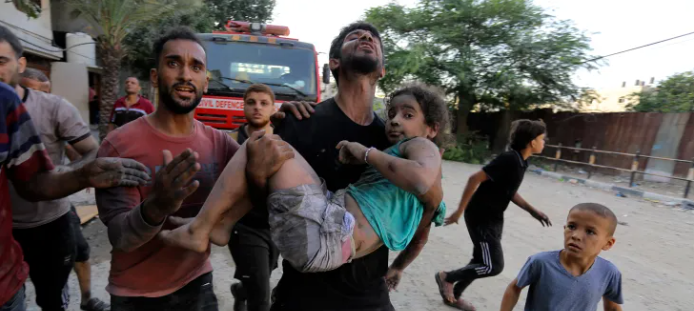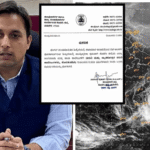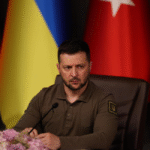The conflict between Israel and Hamas has reached another devastating chapter as recent air strikes in the Gaza Strip resulted in the deaths of 11 Palestinians. This escalation of violence underscores the tragic toll that the ongoing war has taken on civilians, particularly in densely populated areas like Khan Younis, where a school was partially destroyed in the attacks. The Israeli military stated that the strikes targeted Hamas militants operating from a command center located in a compound that previously served as Um Al-Fahm School. Hamas, however, has denied using civilians as cover, raising further questions about the conduct of warfare in such a volatile environment.
This article examines the broader context of the Israeli-Palestinian conflict, the immediate aftermath of the air strikes, the humanitarian impact on the affected population, and the challenges that lie ahead for both sides as they navigate the complexities of war and peace.
Background of the Conflict
The Israeli-Palestinian conflict is one of the most protracted and complex conflicts in modern history. Rooted in historical, religious, and territorial disputes, the conflict has seen multiple wars, uprisings, and peace attempts over the decades. The latest round of violence can be traced back to longstanding grievances on both sides, including territorial claims, the status of Jerusalem, security concerns, and the right of return for Palestinian refugees.
Hamas, an Islamist militant organization, governs the Gaza Strip and has been at the forefront of the resistance against Israeli occupation. Following the 2007 Hamas takeover of Gaza, the region has been subjected to a blockade by Israel and Egypt, severely limiting access to essential goods and services. The humanitarian situation in Gaza Strip has deteriorated dramatically over the years, with high unemployment rates, limited access to clean water and electricity, and widespread poverty.
The recent escalation in violence is characterized by mutual attacks, with Hamas firing rockets into Israeli territory and Israel responding with air strikes aimed at Hamas positions. Civilians, unfortunately, bear the brunt of the violence, raising urgent concerns about human rights violations and the protection of non-combatants in armed conflict.  for more information click on this link
for more information click on this link
Details of the Recent Air Strikes
On the evening of the air strikes, Israeli warplanes targeted several locations in Gaza Strip , including a compound that had previously housed the Um Al-Fahm School. The Israeli military justified the attacks by claiming that Hamas was using the compound as a command center for its operations. This assertion is part of Israel’s broader strategy to dismantle Hamas’ military infrastructure, which it views as a direct threat to its national security.
However, the Israeli military’s targeting of locations associated with civilian infrastructure, such as schools and hospitals, has drawn international scrutiny and condemnation. Humanitarian organizations and rights groups have consistently highlighted the risks posed to civilians in such operations, emphasizing the need for all parties to adhere to international humanitarian law, which mandates the protection of non-combatants in armed conflict.
The air strikes resulted in the immediate deaths of 11 Palestinians, including women and children, exacerbating the already dire humanitarian situation in Gaza. As emergency services rushed to the scene, Gaza Strip they found the area in ruins, with debris scattered across the streets and survivors grappling with the shock of the violence.
The Humanitarian Impact
The humanitarian impact of the air strikes extends far beyond the immediate loss of life. The destruction of the school and other civilian structures further erodes the already fragile infrastructure in Gaza Strip . Schools, hospitals, and homes have been damaged or destroyed in previous conflicts, leaving families without safe places to live and children without access to education.
The ongoing blockade of Gaza has severely restricted the flow of essential goods, including medical supplies, food, and building materials. The combination of air strikes and the blockade has created a dire humanitarian situation, Gaza Strip with thousands of families facing food insecurity,Gaza Strip lack of medical care, Gaza Strip and displacement from their homes.
International organizations, including the United Nations Relief and Works Agency for Palestine Refugees (UNRWA), have reported alarming levels of trauma among the civilian population, particularly children who have witnessed violence and loss. Mental health issues,Gaza Strip including anxiety and depression, have surged as families cope with the ongoing conflict and its consequences.
Humanitarian aid is often hampered by restrictions imposed by both Israel and Hamas, complicating efforts to deliver much-needed assistance. The international community has called for increased access for humanitarian organizations to provide relief to those affected by the conflict, Gaza Strip yet the situation remains precarious.
International Reactions
The recent air strikes have elicited a range of responses from the international community. Human rights organizations have condemned the violence and called for accountability for those responsible for civilian casualties. The targeting of civilian infrastructure has raised concerns about potential violations of international law, Gaza Strip palestinians and various groups have urged both Israel and Hamas to prioritize the protection of civilians.
Countries around the world have reacted differently to the escalation of violence. Some have expressed support for Israel’s right to defend itself against Hamas rocket attacks, while others have called for restraint and emphasized the need for negotiations to achieve a lasting peace. The polarized responses reflect the broader geopolitical complexities of the Israeli-Palestinian conflict and the challenges faced in achieving a consensus on how to resolve the crisis.
The United Nations has reiterated its call for both sides to engage in dialogue and seek a peaceful resolution to the conflict. The UN Secretary-General has urged an immediate ceasefire and has called for an independent investigation into the air strikes and their impact on civilians.  for more information click on this link
for more information click on this link
The Challenges Ahead
As the situation in Gaza continues to deteriorate, the challenges for both Israel and Hamas are significant. The cycle of violence appears unending, with each round of conflict leaving a deeper scar on both communities. For Israel, the security threat posed by Hamas remains a central concern, Gaza Strip palestinians as rocket attacks disrupt daily life and instill fear among civilians.
For Hamas, the ongoing air strikes and military pressure underscore the difficulty of maintaining control and governance in Gaza while facing external aggression. The humanitarian toll on the population has sparked criticism of Hamas’ governance and raised questions about its ability to provide for the needs of its people.
A sustainable solution to the conflict requires addressing the underlying issues driving the violence, including the humanitarian crisis in palestinians , the blockade,Gaza Strip and the broader Israeli-Palestinian peace process. Both sides must be willing to engage in constructive dialogue, negotiate compromises, Gaza Strip and prioritize the well-being of civilians over military objectives.
International mediation and support may play a crucial role in facilitating discussions and creating conditions for a ceasefire. The involvement of regional powers and the international community can help broker negotiations and provide the necessary framework for a lasting peace agreement.
Conclusion: A Call for Peace and Humanitarian Action
The recent air strikes in Gaza, resulting in the deaths of 11 Palestinians, are a stark reminder of the human cost of the Israeli-Palestinian conflict. As violence escalates and humanitarian conditions deteriorate, Gaza Strip it is essential for all parties to prioritize the protection of civilians and work towards a peaceful resolution.
The international community must continue to advocate for humanitarian access, support the affected population, and push for dialogue between Israel and Hamas. Only through a concerted effort to address the root causes of the conflict can a sustainable and just peace be achieved in the region.
As the world watches the unfolding tragedy in Gaza,palestinians it is a call to action for humanity—to recognize the value of every life lost and to strive for a future where such tragedies are no longer commonplace. The pursuit of peace must remain at the forefront, as the path to reconciliation and healing is paved with compassion,Gaza Strip palestinians understanding, and a commitment to uphold human dignity for all. ALSO READ:- At Least 13 Wounded in Southern Ukraine as Russian Air Strikes Escalate: An In-Depth Analysis




